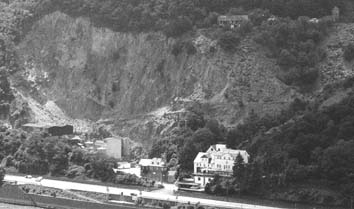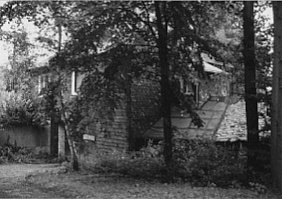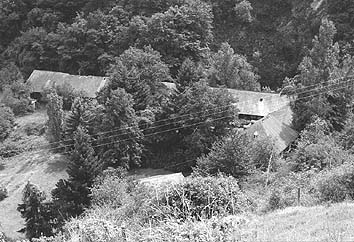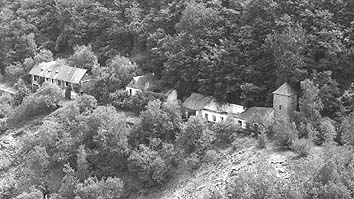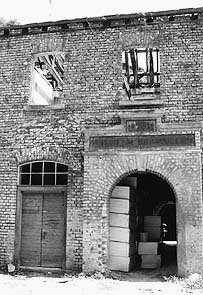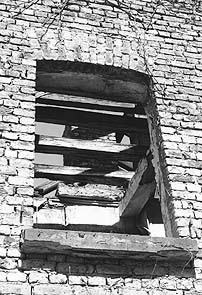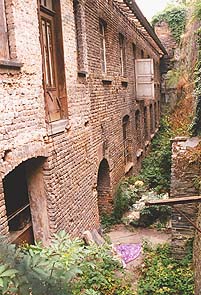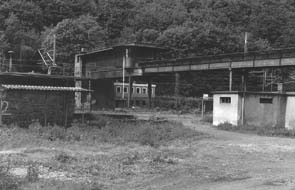
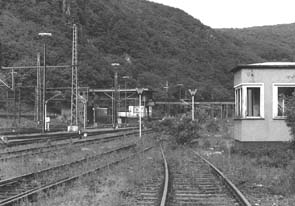
On the road to Bingen you pass these deserted railroad buildings. The viaduct is locked and through the dirty windows you can see old switchboards and dusty manuals. The other buildings are open. The windows are mostly broken. The floors are covered with relics of many parties. There are some doors and stairways leading underground.
Unfortunately I didn't have much time to explore. We were on the way home and my wife was getting impatient. I got 15 minutes to explore while she sat in the car reading a historic novel (about a woman's life in old China).
It's strange that all the buildings are deserted while the railway is very much in use. A train passes every 5-10 minutes. Sometimes even the high-speed, aerodynamic, ICE-trains.
I can't remember exactly, but when we returned in July all these buildings had been demolished (I think).
A bit more to the North we saw many deserted industrial buildings near Boppard.
